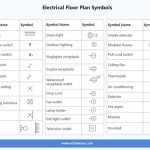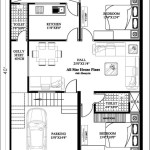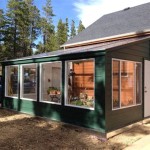Little House Floor Plans: Exploring Cozy Living and Efficient Design
The allure of the "Little House" evokes images of simplicity, warmth, and connection to nature. Often associated with the writings of Laura Ingalls Wilder and other back-to-basics movements, the concept extends beyond mere nostalgia. It represents a conscious choice to prioritize functionality and contentment over excess and consumption. The floor plan of a little house is paramount to achieving this ideal, requiring careful consideration of every square inch to maximize livability and comfort.
The principles behind designing a successful little house floor plan revolve around efficient space utilization, minimal clutter, and a connection to the surrounding environment. These homes are typically no larger than 1,000 square feet, and often much smaller, necessitating creative solutions for storage, multi-functional areas, and a sense of spaciousness. The floor plan becomes the blueprint for a lifestyle centered around intentional living and a reduced environmental footprint.
Modern little houses can be adapted to various lifestyles, from minimalist individuals seeking affordable housing to families embracing a simpler way of life. They can be built as permanent residences, vacation homes, or even mobile dwellings on wheels. Regardless of the specific application, the floor plan remains the critical element that defines the functionality and comfort of the space.
Key Consideration 1: Prioritizing Functionality and Multi-Use Spaces
A crucial aspect of little house floor plans is the integration of multi-functional spaces. Given the limited square footage, rooms cannot afford to be single-purpose. Designers and inhabitants must think creatively about how each area can serve multiple needs throughout the day or week. This might involve a living room that transforms into a guest bedroom, a dining area that doubles as a workspace, or a kitchen island that provides both meal preparation and serving surfaces.
Furniture selection plays a vital role in achieving multi-functional living. Sofas that convert into beds, tables that fold away, and storage units that serve as room dividers are all valuable additions. Built-in elements, such as window seats with storage, or bookshelves that integrate into structural walls, can maximize vertical space and minimize the need for bulky freestanding furniture.
Careful consideration should be given to traffic flow within the little house. A well-designed floor plan will ensure that movement between different areas is smooth and intuitive, minimizing congestion and maximizing usable space. Open-concept designs are popular in little houses, as they create a sense of spaciousness and allow natural light to flow freely throughout the home. However, it is important to strategically define different zones within the open space to avoid a feeling of clutter and disorganization.
Kitchen design in a little house requires particular attention to functionality. Compact appliances, such as combination washer-dryers and smaller refrigerators, are often the norm. Vertical storage solutions, such as pull-out pantries and stacked shelving, can maximize space in cupboards. Counter space is often limited, so incorporating features like pull-out cutting boards or foldable countertops can increase work surfaces when needed.
In smaller bathrooms, the focus remains on maximizing usability. Wall-mounted sinks and toilets can free up floor space, while corner showers and compact bathtubs can optimize the layout. Mirror placement is also important, as strategically positioned mirrors can create the illusion of a larger space. Storage can be incorporated through built-in shelving, medicine cabinets, and under-sink organizers.
Key Consideration 2: Optimizing Storage Solutions
Storage is a perennial challenge in little house living. The key is to think vertically and creatively, utilizing every available nook and cranny. Walls become prime real estate for shelving, cabinets, and hanging storage systems. Attic and basement spaces, if available, can be transformed into organized storage areas.
Under-bed storage is a classic solution, but can be refined with drawers, rolling bins, or even hydraulic lift systems that provide easy access to stored items. The space under stairs can also be utilized for storage, with customized shelves and cabinets tailored to the available space. In kitchens, magnetic knife racks and spice organizers can free up counter space and keep frequently used items within easy reach.
Decluttering is an ongoing process when living in a little house. Regularly purging unnecessary items is essential to maintain a sense of order and prevent the space from feeling cramped. Embracing a minimalist lifestyle, where possessions are carefully chosen and intentionally used, can significantly reduce the need for extensive storage solutions.
Consider the flow of storage around the house, what makes sense where. For example, a mudroom type space at the front or back door where shoes and coats can be stored, either with built-in shelving or even just hooks. Thinking about the natural patterns and habits of the homeowners can help guide the placement of storage.
Outside storage can also be considered. A small shed or deck box can be used to store gardening tools, outdoor furniture, and other items that don't need to be kept inside the house. Carefully landscaped outdoor spaces can also be designed to incorporate storage, such as benches with built-in compartments.
Key Consideration 3: Connecting to the Outdoors and Maximizing Natural Light
Little houses often benefit from a strong connection to the outdoors. Large windows, sliding glass doors, and decks can blur the lines between indoor and outdoor living, creating a sense of spaciousness and bringing natural light into the interior. Strategically placed windows can also frame views of the surrounding landscape, adding to the sense of tranquility and connection to nature.
Orientation of the little house is essential to maximize natural light and passive solar heating. South-facing windows can capture sunlight during the winter months, while overhangs and shading devices can prevent excessive heat gain during the summer. Careful landscaping can also contribute to climate control, with trees and shrubs providing shade and windbreaks.
Outdoor living spaces, such as decks, patios, and porches, can extend the usable living area of a little house. These spaces can be used for dining, relaxing, or entertaining, and can be designed to seamlessly integrate with the interior of the house. Outdoor kitchens and seating areas can further enhance the connection to the outdoors.
Consider plants and greenery as part of the interior design. Indoor plants can improve air quality, reduce stress, and add a touch of nature to the home. Vertical gardens and hanging planters can maximize green space without taking up valuable floor space.
Skylights and solar tubes can bring natural light into areas of the house that may not have access to windows. These features can be particularly beneficial in smaller homes, where natural light is at a premium. They can also help to reduce energy consumption by decreasing the need for artificial lighting during the day.
The integration of natural materials, such as wood, stone, and bamboo, can further enhance the connection to nature and create a warm and inviting atmosphere. These materials can be used for flooring, walls, and furniture, and can add texture and visual interest to the interior design.
When designing a little house, consider the surrounding environment and how it can influence the design. Taking advantage of natural features, such as views, sunlight, and prevailing winds, can create a home that is both functional and aesthetically pleasing. A well-designed little house can be a sanctuary from the stresses of modern life, providing a space where one can reconnect with nature and embrace a simpler way of living.

27 Adorable Free Tiny House Floor Plans Small

Tiny House Floor Plans With Lower Level Beds Tinyhousedesign Design

Small House Plans Simple Floor Cool

10 Small House Plans With Open Floor Blog Homeplans Com

27 Adorable Free Tiny House Floor Plans Craft Mart

Small House Plans Simple Tiny Floor Monster

Tiny House Plan Examples

10 Small House Plans With Open Floor Blog Homeplans Com

The Best 2 Bedroom Tiny House Plans Houseplans Blog Com

Plan 73931 Detached Guest House Or Tiny With Photos
Related Posts








